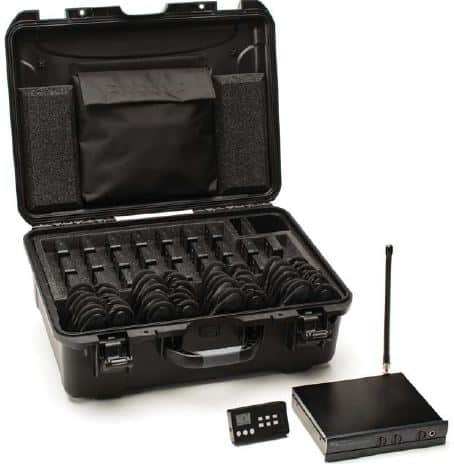Simultaneous interpretation equipment in Montreal


Translation and Interpretation Systems and equipment in Montreal

From this article, we explain all the information about the simultaneous interpretation equipment for users who are in Whitehorse.
What is simultaneous interpretation?
Simultaneous interpretation involves interpreting the speaker’s language at the same time they are speaking. It is a vital tool in meetings where participants do not speak the same language, facilitating the exchange of information and ensuring that everyone understands what is being said. Unlike consecutive interpreting, the speaker does not pause for the interpreter to translate before resuming their speech.
Simultaneous interpreting is typically performed by teams of two or three interpreters, depending on the size of the audience. It is ideal for long speeches as it does not double the speech time. Additionally, it is suitable for all types of meetings, and interpreters typically take turns every 30 minutes.
Simultaneous interpretation equipment today
Simultaneous interpretation equipment is produced by professionals who specialize in this field. It is crucial to seek out companies that specialize in this work as they provide the best equipment for simultaneous interpretation. Simple audiovisual markets may not have the capacity to manufacture tools that are suitable for this type of interpretation.
To avoid technical problems during interpretation, it is essential to call on experts in the field who can provide reliable and efficient equipment. The effectiveness of the equipment depends on the specialists’ knowledge of the rules and regulations of the profession. Renting equipment from the manufacturing company is also an option.

What configurations of simultaneous interpretation equipment are there?
There are two types of simultaneous interpretation setups: permanent installations and portable/mobile configurations.
Permanent installations are typically soundproof booths located at the back of the conference room. While these setups are comfortable and equipped with windows and doors, they are not mobile and cannot be easily moved to different venues.
Portable/mobile configurations, on the other hand, are ideal for venues where the equipment is not fixed. These setups are portable and can be easily installed before the conference begins. Booths must meet specific size standards, including space for at least two interpreters per language. Larger assemblies may require up to three interpreters per booth. Mobile booths are also equipped with lights and ventilation.
Whispering equipment is a portable solution that allows interpreters to move freely around a meeting while whispering the translation to the listener. This setup typically consists of a wireless transmitter and receiver. While mobile, this type of equipment may not be as comfortable for standard meetings.

What equipment is inside the simultaneous interpretation booth?
Simultaneous interpretation console
An interpreting console consists of headsets and microphones: these are the tools that interpreters use. They are simultaneous equipment system receivers: the speakers use the headsets and the interpreters communicate into the microphones. When the conference room does not have a booth, the interpreters use tour guide cases. Professionals must check the equipment before it is used. In order for the transfer of information to go smoothly, they must be regulated. The number of headsets and microphones must also correspond to the number of participants in the conference.
A headset for the interpreters
In order to listen to the original conversation of the participants, the interpreters use adapted headsets. It is important to note that specialists design this device in such a way as to capture the message exchange. Therefore, managers must ensure that the headsets are powerful enough not to create a mess. There are interpreters who bring headsets with them when they travel. In terms of better production, companies that specialize in simultaneous interpretation provide this tool better.
An interpreter’s microphone
A microphone is a tool that will capture the sound energy of a sound and transform it into an electric current. It has its advantage in amplifying the initial sound in a conference room. What about the interpreter’s microphone?
- A headset microphone: The headset is connected to and attached to the conference microphone. The advantage is that the headset does not become separated from the microphone. In this case, the interpreter can turn his or her head in any direction without leaving the microphone. The arm of the headset can also be bent easily, which is one of its advantages. The microphone headset is recommended for interpreters because of its ease of use.
- Console microphone: This is a conference microphone that is integrated into a console. This interpreting device is no more comfortable than the headset microphone.
- A tabletop microphone: This microphone is placed on a table, with a cable attaching it to the console. This is not a good choice of microphone for interpreters, as it can be uncomfortable to use. This microphone can get hot and the interpreter will move it to get away from it. However, this will cause a very disturbing sound, the headset microphone is more practical.

